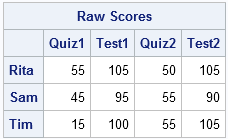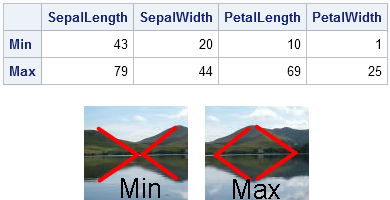The DO Loop
Statistical programming in SAS with an emphasis on SAS/IML programs
At the beginning of my book Statistical Programming with SAS/IML Software I give the following programming tip (p. 25): Do not confuse an empty matrix with a matrix that contains missing values or with a zero matrix. An empty matrix has no rows and no columns. A matrix that contains

A common task in SAS/IML programming is finding elements of a SAS/IML matrix that satisfy a logical expression. For example, you might need to know which matrix elements are missing, are negative, or are divisible by 2. In the DATA step, you can use the WHERE clause to subset data.

A SAS programmer recently posted a question to the SAS/IML Support Community about how to compute the kth smallest value in a vector of numbers. In the DATA step, you can use the SMALLEST function to find the smallest value in an array, but there is no equivalent built-in function

Like most programming languages, the SAS/IML language has many functions. However, the SAS/IML language also has quite a few operators. Operators can act on a matrix or on rows or columns of a matrix. They are less intuitive, but can be quite powerful because they enable you perform computations without

There are many ways to multiply scalars, vectors, and matrices, but the Kronecker product (also called the direct product) is multiplication on steroids. The Kronecker product looks scary, but it is actually simple. The Kronecker product is merely a way to pack multiples of a matrix B into a block

A common question on SAS discussion forums is how to compute the minimum and maximum values across several variables. It is easy to compute statistics across rows by using the DATA step. This article shows how to compute the minimum and maximum values for each observation (across variables) and, for
